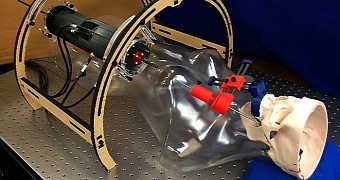Epilepsy is one of the nastiest psychological conditions known to man, but there are ways that at least have a chance of treating if not eliminating the disease. A new robot has been created that will make surgeries easier to carry out.
We probably don't need to tell you how nasty epileptic seizures can be. Even if you've never witnessed one, you probably heard of the condition by reputation.
The region believed to be involved in epileptic seizures is located in the lower portion of the brain, and thus, isn't easy to access. It is called the hippocampus. Sure, there's medication for epilepsy, but it doesn't always help.
Normally, to access the hippocampus, a surgeon needs to drill a hole through the skull itself and remove the section of the brain involved. The new robot from Vanderbilt University eliminates that requirement.
The 3D printed epileptic treatment robot
Invented by Vanderbilt University engineering graduate student David Comber and mechanical engineering Associate Professor Eric Barth, it was developed over a period of five years.
The surgery it will carry out is very delicate but a lot safer. For one thing, the robot works from within an MRI machine, which means that the operator can constantly see what they're doing.
Another benefit is that the surgical needle is made of a shape-memory alloy (nickel titanium), allowing it to deform and later reclaim its original shape when heated.
The needle and the electronics are the only things about the robot that aren't 3D printed. Everything else can be made through additive manufacturing machines, keeping costs low and designs consistent.
The easier surgery and the lower odds of complications, both during and after the intervention, should cut down on the recovery time as well. Especially since no hole has to be drilled in the skull. Instead, the needle enters the patient's cheek through gaps in the bone. Made better by this being a shorter distance to the hippocampus as well.
The development history of the robot
The 3D printed surgical robot was thought up by David Comber and Eric Barth, as we said before, but Jonathon Slightam and Vito Gervasie of the Milwaukee School of Engineering helped make the 3D design aspects. Other people from Vanderbilt provided insight on certain technical aspects as well.
Cadaver testing will be used to try out the surgery first. After that, it should only take a decade for the surgical 3D printed robot to start being used in actual hospitals.

 14 DAY TRIAL //
14 DAY TRIAL //